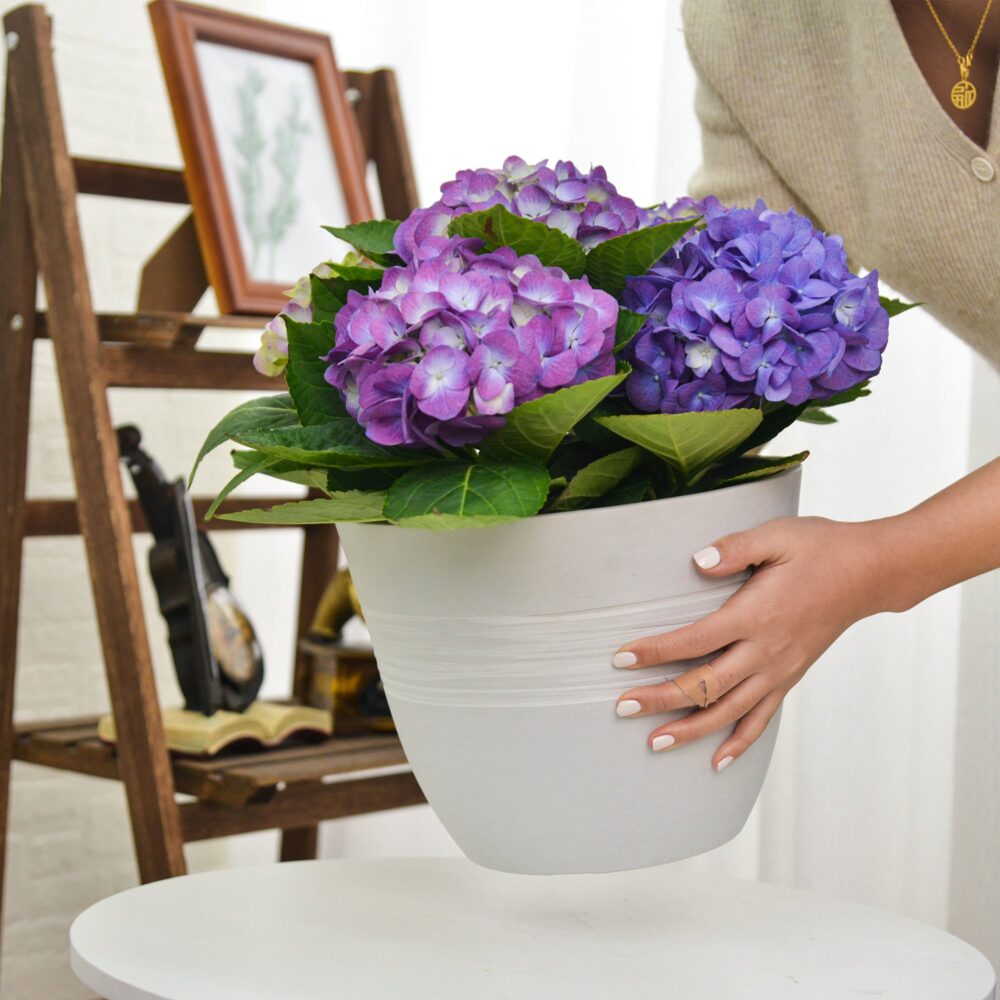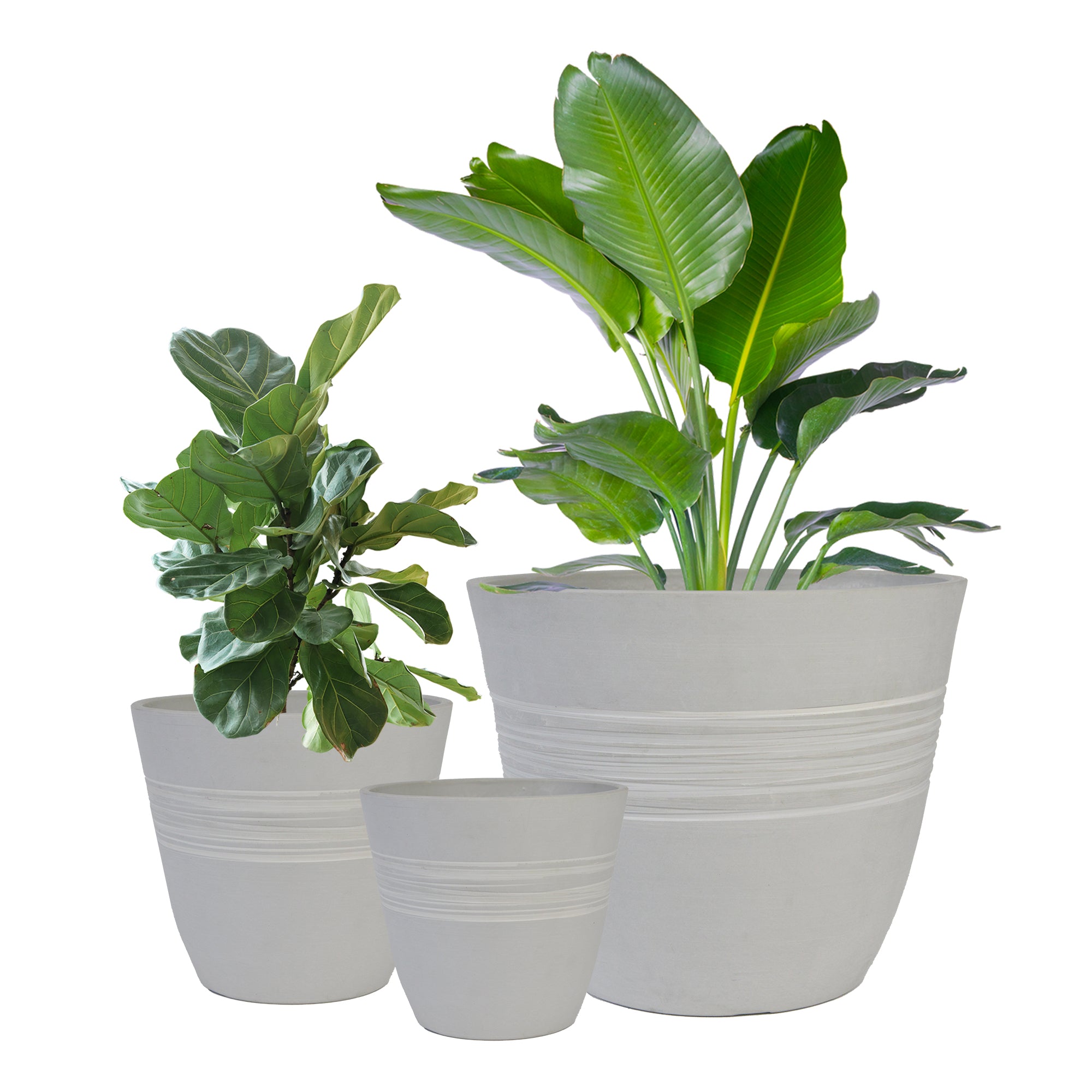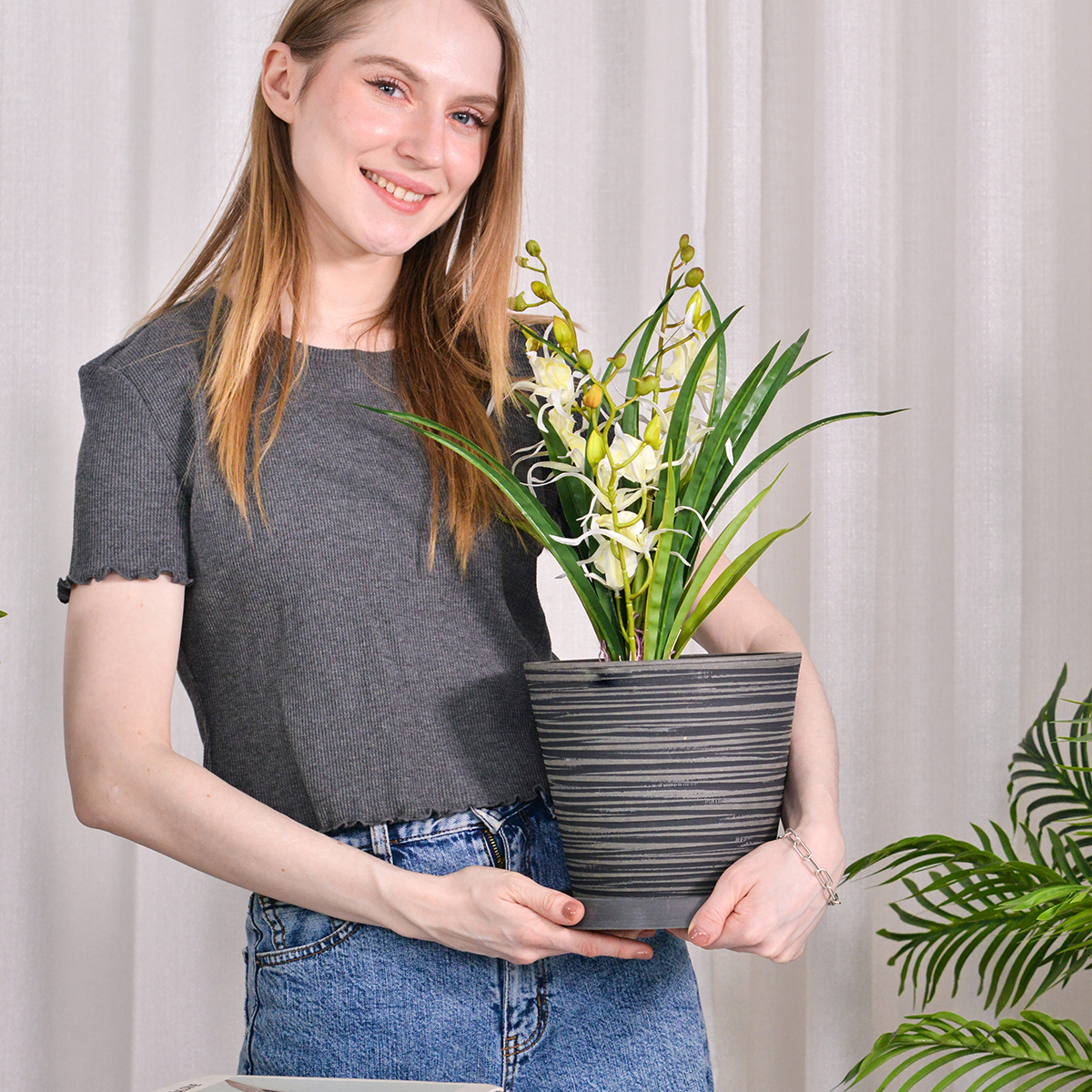How can I automatically water my plants while on vacation?
How can I automatically water my plants while on vacation?
Here are several ways to automatically water your plants while you are on vacation, ranging from simple to more advanced methods:
1. Simple DIY Methods (Suitable for Short Trips – Up to a Week):
Watering Globes or Bulbs: These are decorative glass or plastic bulbs that slowly release water into the soil.1
- How they work: You fill the globe with water and insert the narrow stem into the plant’s soil.2 As the soil dries, water is gradually released.3
- Pros: Easy to use, aesthetically pleasing, good for individual pots, inexpensive.
- Cons: Limited water capacity, may not be suitable for very thirsty plants or longer trips, water release rate can be inconsistent.
- Where to buy: Garden centers, home stores, online retailers.
Plastic Bottle Drip System: A simple way to create a slow-drip watering system using readily available plastic bottles.4
- How it works: Puncture small holes in the cap of a plastic bottle filled with water.5 Invert the bottle and push the neck into the plant’s soil. Water will slowly drip out through the holes.6
- Pros: Very low cost (uses recycled bottles), DIY, you can adjust the drip rate by changing the size or number of holes.
- Cons: Can be a bit messy to set up, water capacity is limited by the bottle size, drip rate can be somewhat inconsistent, might not be the most visually appealing.
- DIY Instructions: You can easily find tutorials online by searching for “DIY plastic bottle plant watering”.
Wick Watering System: This method uses a wick (like cotton rope or strips of felt) to draw water from a reservoir to your plants.7
- How it works: Place one end of a wick into a container of water (your reservoir) and bury the other end deep into the soil of your plant pot. The wick will draw water up to the plant as the soil dries.8
- Pros: Inexpensive, DIY, can be scaled up for multiple plants using a larger reservoir, provides consistent water delivery.
- Cons: Requires a bit of setup, you need to ensure the water reservoir is elevated or positioned correctly relative to the plant, wicks can potentially clog over time, reservoir size needs to be appropriate for the length of your trip.
- DIY Instructions: Search online for “wick watering plants vacation” for step-by-step guides.
Bathtub or Sink Grouping (Humidity Method): For very short trips, you can create a humid environment for your plants by grouping them in a bathtub or sink.9
- How it works: Line your bathtub or sink with old towels or newspaper, add a shallow layer of water, and then place your potted plants on top.10 The evaporating water will increase humidity and the damp towels can provide a little moisture to the pots.
- Pros: Very simple, no special materials needed, increases humidity which can be beneficial for some plants, suitable for very short absences.
- Cons: Only works for short trips (a few days max), plants need to be moved, can be messy, not ideal for plants that dislike humidity or soggy conditions, provides minimal actual watering.
- Best for: Plants that are somewhat drought-tolerant or those that benefit from increased humidity.

2. Simple Commercial Solutions (Suitable for Medium Length Trips – 1-2 Weeks):
Self-Watering Planters: If you are not already using them, you could consider repotting some plants into self-watering planters before your vacation.
- How they work: These planters have a built-in reservoir at the bottom.11 Water is drawn up to the plant’s roots through a wicking system as needed.12
- Pros: Provides consistent moisture, reduces watering frequency, helps prevent over and under-watering for many plant types.
- Cons: Requires repotting, can be more expensive than standard pots, not ideal for all plant types (especially those that prefer dry soil between waterings).
- Where to buy: Garden centers, nurseries, home improvement stores, online retailers (search for “self-watering planters”).13
Watering Spikes or Stakes: Similar to watering globes but often use a bottle as a larger water reservoir.
- How they work: You attach a water-filled bottle to a ceramic or terracotta spike. The spike is inserted into the soil, and water slowly seeps out.
- Pros: Easy to use, relatively inexpensive, you can use different sized bottles for varying water needs, more discreet than globes.
- Cons: Water capacity is limited by the bottle size, may not be suitable for very thirsty plants or long vacations, water release rate can vary.
- Where to buy: Garden centers, online retailers (search for “plant watering spikes” or “watering stakes”).14
Capillary Mats: These are absorbent mats that you saturate with water; pots placed on the mat draw up moisture as needed.15
- How they work: You place a capillary mat in a tray or sink, saturate it with water, and then place your potted plants on top of the mat. The pots will draw water up from the mat as the soil dries.
- Pros: Good for watering multiple plants at once, provides consistent moisture to pots sitting on the mat, relatively inexpensive.
- Cons: Plants need to be grouped together, you need a tray or sink large enough for the mat, the water reservoir is limited by the size of the tray/sink, capillary mats can sometimes develop algae and need cleaning.
- Where to buy: Garden centers, hydroponics suppliers, online retailers (search for “capillary mat plant watering”).
3. More Advanced/Automated Systems (Suitable for Longer Trips and Larger Plant Collections):
Automatic Drip Irrigation Kits: These systems are designed to deliver water directly to the soil of each plant using tubing, drippers, and a timer.16
- How they work: A network of thin tubing is connected to a water source (like an outdoor faucet or a reservoir). You run the tubing to each plant pot and insert a dripper into the soil of each pot.17 A timer is used to schedule watering times and durations.18
- Pros: Most effective and reliable for consistent watering, customizable for different plant needs by using different dripper types, can water a large number of plants, programmable timers offer precise control over watering schedules, ideal for longer absences.
- Cons: More expensive upfront, requires some setup and installation (cutting tubing, placing drippers), you need a water source nearby (faucet or large reservoir), can be more complex to configure initially.
- Where to buy: Garden centers, home improvement stores, irrigation supply stores, online retailers (search for “automatic drip irrigation kit for pots” or “vacation plant watering system”). Brands like Rain Bird, Orbit, and Gardena offer kits designed for potted plants.19
Smart Watering Systems: These are the most advanced option and often incorporate soil moisture sensors, weather data, and smartphone apps for fully automated and optimized watering.
- How they work: Soil moisture sensors are placed in your plant pots and relay information about soil dryness to a central controller.20 The controller then automatically adjusts watering based on the sensor readings and often integrates with weather forecasts to avoid overwatering when it rains. Many smart systems are controlled via a smartphone app, allowing you to monitor and adjust watering remotely.21
- Pros: Most advanced and automated, optimizes water usage by watering only when needed, can be monitored and adjusted remotely via an app, often integrates with weather forecasts for smart adjustments, very convenient for long trips and for precise plant care.
- Cons: Most expensive option, requires setup and potentially a bit more technical knowledge to install and configure, relies on technology and a power source, sensor accuracy can sometimes vary.
- Where to buy: Online retailers, some specialized garden centers (search for “smart plant watering system” or “wifi plant watering”). Brands like Rachio (when used with compatible valves for individual pots), Eve Aqua (with compatible valve), Netro, and some self-watering planter brands offer smart system components.22
Choosing the Best Method for You:
To decide which automatic watering method is best for you, consider these factors:
- How long will you be gone? For short trips, simple DIY methods or watering globes might suffice. For longer trips, you’ll likely need more reliable commercial or automated systems.
- How many plants do you need to water? For a few plants, individual solutions like globes or spikes might be fine. For many plants, drip irrigation or capillary mats are more efficient.23
- What types of plants do you have and what are their watering needs? Drought-tolerant plants will need less water than moisture-loving plants.24 Consider grouping plants with similar water needs together.
- What’s your budget? DIY methods are the cheapest. Smart watering systems are the most expensive.
- How comfortable are you with DIY projects or technology? Some methods are very simple, while others require more setup or technical knowledge.
- Do you have access to an outdoor faucet or a suitable reservoir? Drip irrigation systems typically need a water source.25
Important Tips Before You Leave:
- Test your chosen method thoroughly before your vacation! Set up your chosen watering system at least a few days before you leave and monitor it to make sure it’s working correctly and delivering the right amount of water. Adjust as needed.
- Water your plants thoroughly right before setting up your automatic system and leaving. This gives them a good moisture base to start with.
- Move your plants to a more sheltered location if possible. If you’re going away during a particularly hot or sunny period in Singapore, moving your plants to a shadier spot on your balcony or patio can help reduce water loss through evaporation.
- Consider asking a neighbor or friend for backup, especially for longer trips. Even with an automatic system in place, it’s always a good idea to have someone you trust check on your plants periodically, just in case of any system malfunctions or unexpected issues.

By planning ahead and choosing the right automatic watering method, you can relax and enjoy your vacation knowing your plants will be well cared for in your absence!
Planter for Indoor Outdoor Plants, Set of 2 Modern Decorative Plant Pots with Drainage Hole, Decorative Flower Pots
By greenship-seo|2025-01-14T12:26:44+00:00January 14, 2025|Categories: Hand-carving Series|Tags: Decorative Flower Pots|
Plant Pots 6 inch 8 inch 12 inch for Indoor Outdoor Plants, Set of 3 Modern Decorative Planter with Drainage Hole, Decorative Flower Pots
By greenship-seo|2025-04-10T06:38:40+00:00January 16, 2025|Categories: Hand-carving Series|Tags: Decorative Flower Pots|
k2-21G
By greenship|2024-08-13T06:17:26+00:00August 13, 2024|Categories: Hand-carving Series|
KC2-11V
By greenship|2024-08-16T05:39:50+00:00August 16, 2024|Categories: Hand-carving Series|
K2-11T
By greenship|2024-08-13T04:21:25+00:00August 13, 2024|Categories: Hand-carving Series|
KC3-14A
By greenship|2024-08-16T06:26:30+00:00August 16, 2024|Categories: Hand-carving Series|






